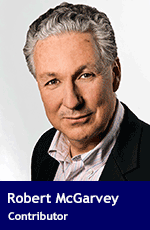 At the recently-concluded World Economic Forum in Davos, Switzerland, a surprising number of economic papers dealt with ‘secular stagnation,’ the term economists use to describe our enduring recession.
At the recently-concluded World Economic Forum in Davos, Switzerland, a surprising number of economic papers dealt with ‘secular stagnation,’ the term economists use to describe our enduring recession.
One of the more popular reasons put forward for secular stagnation is an aging population in the western developed nations. The logic goes something like this: Holding other factors of production fixed, one should expect a decline in gross domestic product (GDP) per capita as older workers leave their productive jobs and retire. This should logically translate into slower GDP growth per capita over time.
But as usual in economics, common sense doesn’t always apply. It seems that GDP growth has been higher in economies with aging populations than expected. A rationale to explain this phenomenon is lower-than-expected nominal interest rates. Low rates have facilitated something called capital deepening, which is another way of saying savings are flowing into assets, like property and the stock market, where returns are higher than banks’ savings account returns.
So what’s the recommendation for economic recovery? Negative interest rates (what economists refer to as breaking the ZLB or zero lower boundary)?
If we follow this advice, it will continue to misdirect capital and extend our era of slow growth, because capital deepening in these traditional classes of assets is economically unproductive.
Both property and the stock market have flourished over the past few decades. However, property’s productive value is unchanging (once built) and investing in the stock market is not productive; it’s essentially a side bet on the economy.
So these sectors are gobbling up savings while the real economy is faltering; productivity has flat-lined and GDP growth in developed economies remains at historic lows.
The reasons that economists don’t recognize these problems are deep-seated. Modern economists focus too much on exchange processes (i.e. markets) and have taken their eye off the more primary process of capital formation. That’s bad enough in normal times but is potentially fatal today, given the rapid transformation we’re experiencing from tangible to intangible asset foundations.
Clearly, the digital economy isn’t just another phase in the industrial era. It’s an entirely new paradigm, with new assets and a much different value creation formula.
Although the rise of intangibles was once dismissed as services, today the changing engine of growth is obvious (more than 85 per cent of a modern economy is intangible) and these new assets are different enough that it’s forcing major changes in economic thought and practise.
Coming under increasing scrutiny is marginal utility theory, the foundation stone of neoclassical economics. It was this 19th-century idea that shifted the area of analysis in economics away from capital development towards the exchange process.
The truth is, since the late 1870s, economists have not studied capital or assets. They don’t really know what it is, how it forms or (most importantly) how it changes.
This central flaw has spread like a virus throughout the capitalist system, infecting corporate management which continues to cling to an outdated industrial theory of capital, to accounting that denies the legitimacy of intangible assets, all the way to macroeconomists who attempt to understand the economy by examining it through a GDP/productivity lens that only recognizes the industrial ‘machine’ and its tangible output.
As a result, we have few effective tools to manage the 21st century economy. We can’t restructure capital markets to oxygenate the productive heart of an intangible economy if we deny the existence of intangible assets. So western economies have stalled and will continue to underperform.
And, even worse, we’re powerless to address the rapid and ongoing concentrations of wealth in modern capitalism. If we don’t question who owns these new assets, we can’t even begin to identify, never mind solve, this serious problem.
We need to refocus economic attention on capital and adapt our mindset and institutional systems to support these changes.
Capital in the digital age is morphing into many forms. Apart from the explosive growth of knowledge and network-based assets, labour is being recognized as a form of capital, albeit heavily discounted. So are all the social-owned assets (modern education systems, solid judicial and legal systems, etc.), all of which need economic attention and capital investment.
So secular stagnation isn’t inevitable. If we identify and formalize the new forms of capital, it will help redirect savings, regenerating the economy and growth.
Robert McGarvey is an economic historian and former managing director of Merlin Consulting, a London, U.K.-based consulting firm. Robert’s most recent book is Futuromics: A Guide to Thriving in Capitalism’s Third Wave.
Robert is a Troy Media Thought Leader. Why aren’t you?
For interview requests, click here. You must be a Troy Media Marketplace media subscriber to access our Sourcebook.
The views, opinions and positions expressed by columnists and contributors are the author’s alone. They do not inherently or expressly reflect the views, opinions and/or positions of our publication.

